Operation Barbarossa was a difficult trial for the Wehrmacht, as they ran into many unexpected complications. One of them was the presence of a significant amount of Soviet tanks with shell-proof armour (T-34 and KV). The 37 mm anti-tank gun was powerless against them. Another issue was the low quality of roads, which turned into a serious obstacle for wheeled vehicles and even halftracks as soon as the autumn rains came. The first issue was solved by introducing the 75 mm Pak 40, the second by creating the «eastern» RSO prime mover. In 1943 these were joined together to form an ersatz tank destroyer 7,5 cm Pak 40/4 auf RSO (Sf).
The Steyr company was inspired by Soviet STZ-5 tractors, captures in great numbers in the summer of 1941. They weren't too fast, but they were simple and reliable, and their off-road mobility was phenomenal. The layout with a driver's cabin on top of the engine permitted the short vehicle to have a large truck bed. The STZ-5 could tow up to 4.5 tons and carry another 1.5 in the bed. The German equivalent, the RSO (Raupenschlepper Ost, Eastern Tracked Tractor) was built using components from the 1.5 ton Steyr 1500A truck, but it was fully tracked.
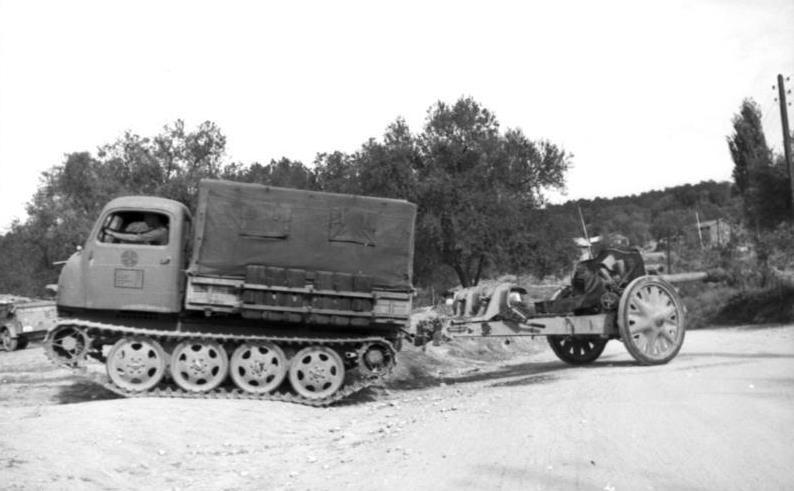
The RSO was put into mass production in 1942. The design was dead simple, cheap, and perfect for mass production. Over 28,000 units were produced before the end of WWII. The tracked running gear with a high clearance helped the RSO deal with rasputitsa. The top speed of the tractor with no load was 25 kph, but speed was a tertiary requirement on the Eastern Front behind off-road mobility and ease of repair. The RSO met these requirements perfectly.
Ersatz tank destroyer
The RSO was initially seen as a transport vehicle, but work began in 1943 to turn it into an SPG by installing anti-tank or anti-air armament. It's hard to say that the Wehrmacht was hard pressed for tank destroyers at the time. In 1943 the first generation vehicles armed with 47 mm guns were being replaced by several types of Marder tank destroyers armed with either 75 mm Pak 40 guns or converted Soviet 76.2 mm guns. However, the promise of a cheap tank destroyer with high off-road mobility was very tempting, as it was very difficult for the Pak 40 crew to move it around the battlefield. Anti-tank artillery also suffered heavy losses during retreats, as there was not always time to get the gun tractors up in time to save the cannons.
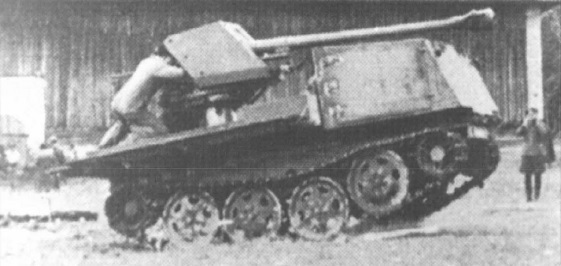
Development of a tank destroyer on the RSO chassis began in the summer of 1943. Conceptually it was closer to the Waffentragers: a self propelled gun with minimal defenses. One difference from the Marder guns was the ability to fire at a wider angle. The Pak 40/4 installed on the RSO could traverse 360 degrees, whereas the Marder II only had 57 degrees of traverse.
The first prototypes had a fully enclosed armoured two-man cabin. The Pak 40/4 was installed on the platform behind it. The gun crew's only protection was the gun shield. The SPG lost one of its main advantages in this configuration: low bore axis height. This made the tank destroyer hard to conceal and reduced stability when firing. A demonstration to senior military representatives ended poorly. The designers were instructed to redo the tank destroyer. This was done by August of 1943.
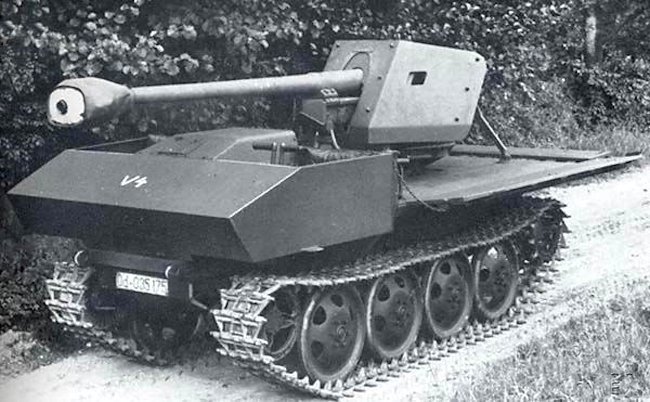
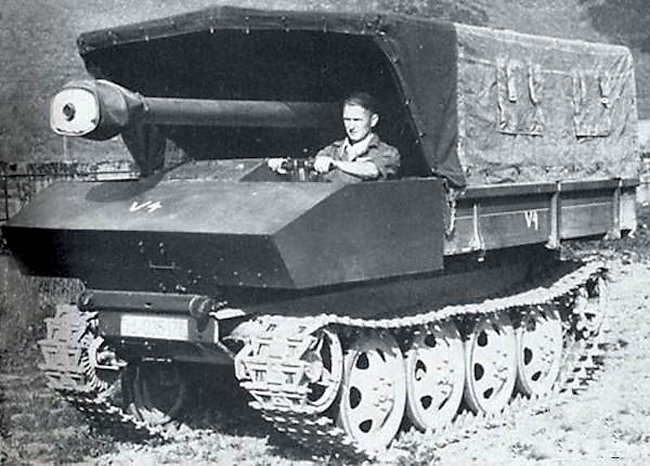
The new vehicle had a lower armoured cabin that fully covered the engine, but not the driver. The thickness was no more than 10 mm. The height of the Pak 40/4 mount was also reduced. The firing platform kept its wooden sides that were flipped open in battle. During travel the firing platform was covered by a tent that also formed a roof over the driver's seat. The prototype was named V4, which allows us to deduce that there were three prototypes built previously (with a fully enclosed cabin), but this is not confirmed in documents.
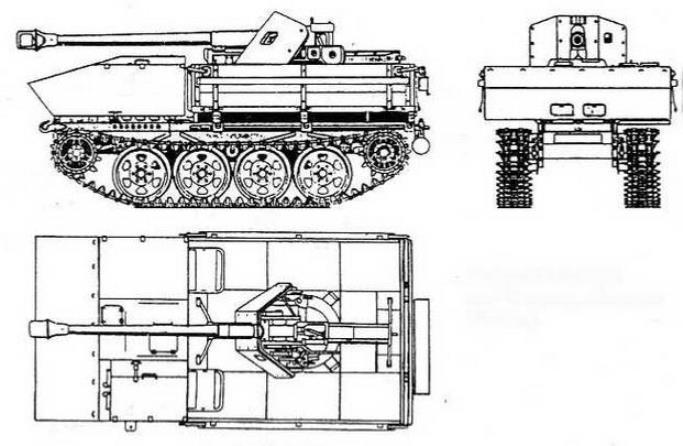
The vehicle was named 7,5 cm Pak 40/4 auf gep. Sebstfahrlafette Raupenschlepper Ost (75 mm anti-tank gun 40/4 on the eastern tracked tractor armoured self propelled mount) or 7,5 cm Pak 40/4 auf RSO (Sf) for short. The crew consisted of four men: the commander, driver, gunner, and loader. The gun elevation ranged from −5 to +22 degrees, the traverse was 360 degrees. 28 rounds of ammunition were carried in seven crates under the platform floor (four rounds per crate). The gun fired the same ammunition as the towed Pak 40.
- Spr.Gr.: HE shell, 5.74 kg, muzzle velocity of 550 m/s
- Pz.Gr. 39: AP shell, 6.8 kg, muzzle velocity of 790 m/s
- Pz.Gr.40: APCR shot with a tungsten carbide core, 4.1 kg, muzzle velocity of 990 m/s
- HL.Gr.: HEAT shell, 4.6 kg. Used to defeat armoured targets at a range of under 600 m.
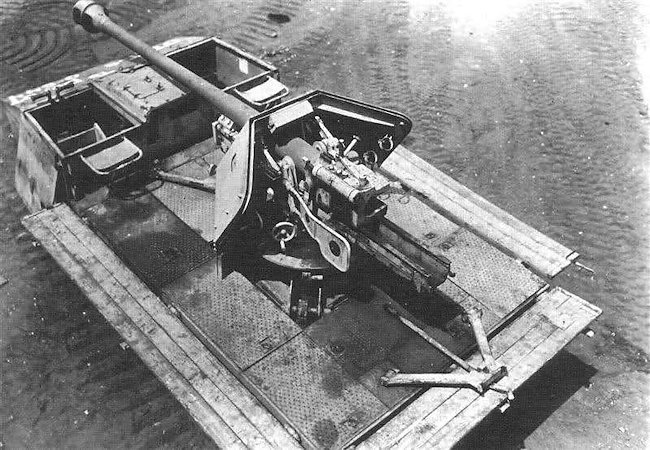
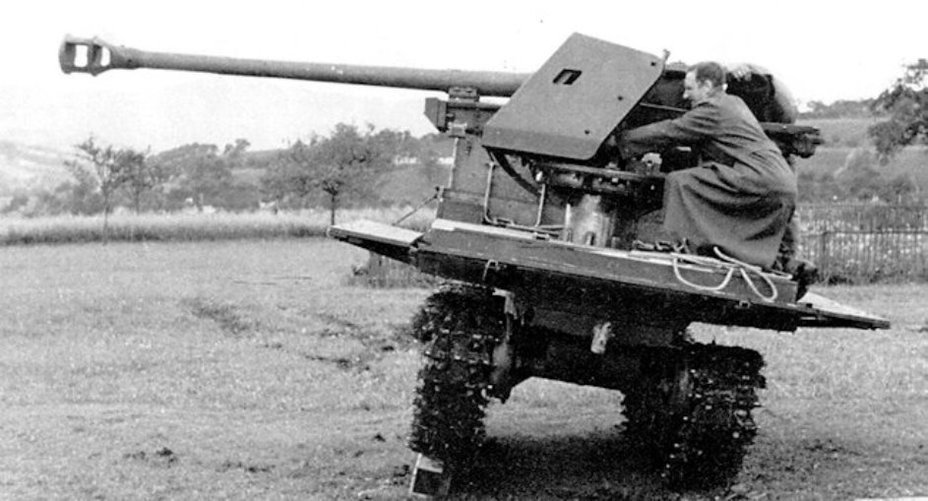
Production and service
The Steyr company began building a batch of 50 SPGs for wide scale trials in Army Group South in September of 1943. A vehicle was shown to Hitler on October 1st (only 3 were ready by then). The simple and cheap vehicle armed with a powerful gun impressed the Fuhrer. He directed to increase production of the 7,5 cm Pak 40/4 auf RSO (Sf) from 60 in March of 1944 to 400 in July. However, very critical reviews began arriving from the front lines, and the overall production volume was not high (various sources give 60, 83, and 89 units).
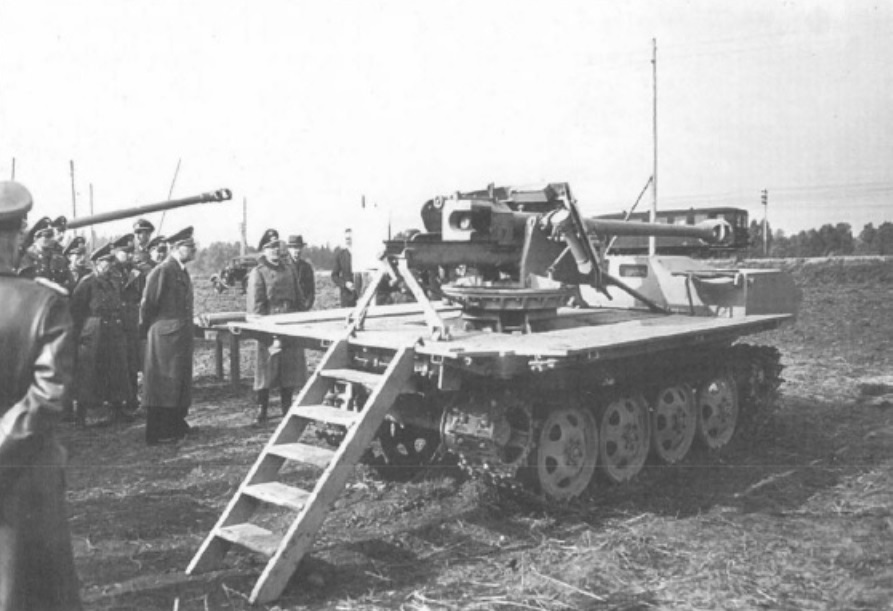
Factory trials of the first batch of tank destroyers began in December of 1943 and deliveries to the front began in February. One of the first units to receive the vehicle was the 1st Ski Brigade, turned into the 1st Ski Division in the spring of 1944. The unit was a part of Army Group Center (later in Army Group North Ukraine) and fought near the Pripyat marshes. Each of its two ski regiments received an anti-tank/AA gun company, initially numbered #9 (after the regiments were transformed into 3-battalion formations it received the number 13).
The company's authorized strength was two AA guns (20 mm Sd.Kfz.10/5 halftracks) and two anti-tank gun platoons. Each platoon had three 7,5 cm Pak 40/4 auf RSO (Sf), one RSO for carrying ammunition, the commander's Kubelwagen, and an Sd.Kfz.2 halftrack. Since the skiers received only 9 tank destroyers, the 9th (13th) company of the 2nd Ski Regiment only had one anti-tank platoon instead of two. The division lost most of its tank destroyers in combat, but still had one 7,5 cm Pak 40/4 auf RSO (Sf) in early 1945 when it was fighting in Slovakia.
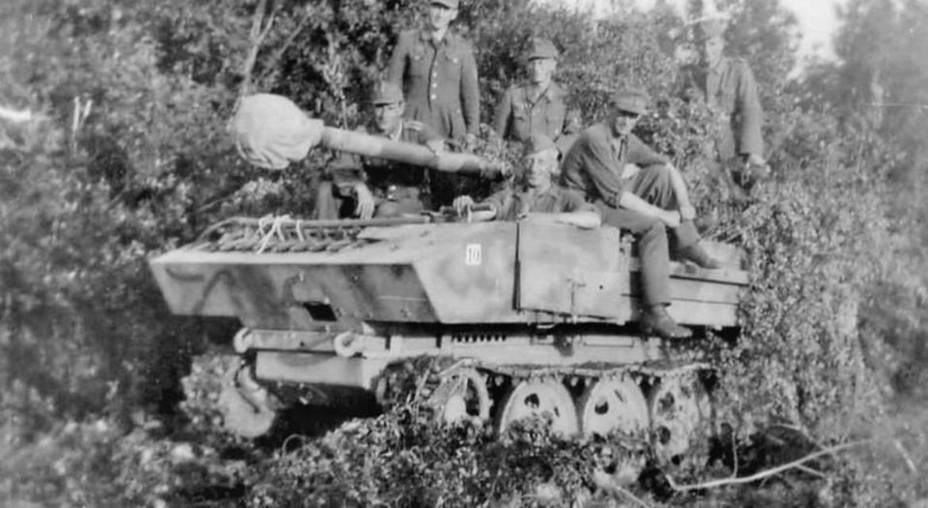
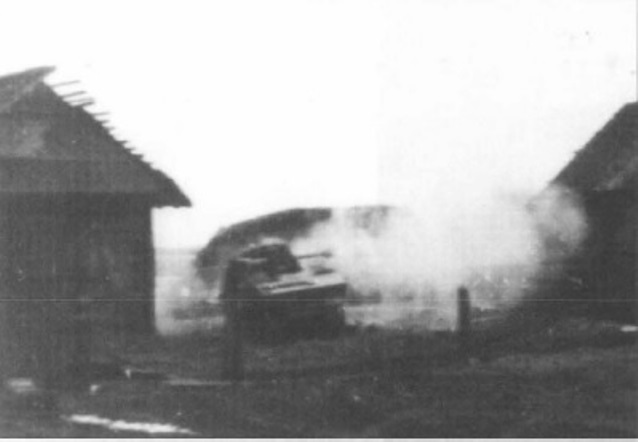
Most 7,5 cm Pak 40/4 auf RSO (Sf) ended up not in infantry units, but in army tank destroyer battalions (Armee Panzerjäger-Abteilung). None were fully rearmed with these SPGs, at most there was one per company. The use of the 7,5 cm Pak 40/4 auf RSO (Sf) is confirmed in the 743rd battalion (9th Army) and 744th battalion (2nd Army) in Army Group Center, 751st battalion of the 16th Army (3 SPGs as of September 1st, 1944) and 752nd battalion of the 18th Army (8 SPGs, 7 of which were functional, as of May 1st, 1944) in Army Group North. It is also possible that they served in the 741st, 742nd, and 753rd battalions. There are reports of the 7,5 cm Pak 40/4 auf RSO (Sf) being used in the 18th Panzergrenadier Division (Army Group Center).
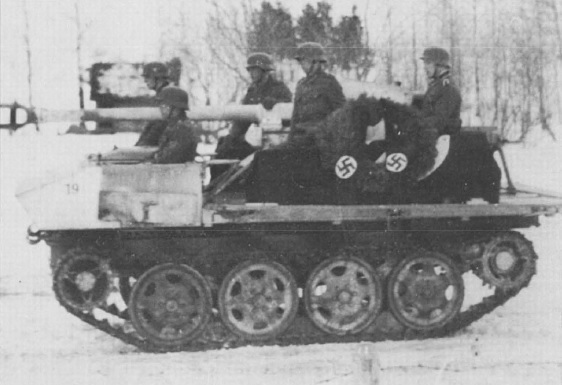
The 7,5 cm Pak 40/4 auf RSO (Sf) was not popular among the troops. Its drawbacks included low speed, the noise produced by its air cooled engine and its tendency to overheat, a lack of fighting compartment that made the crew's work difficult both in battle and in transit. The ammunition racks were uncomfortable and the ammunition was hard to reach. The tall silhouette that made the gun hard to hide and unstable during firing also drew complaints. The last factor earned the RSO a nickname: Rollender Sarg Ost (Eastern tipping coffin).
Translated by Peter Samsonov. Read more interesting tank articles on his blog Tank Archives.
Sources:
- Bryja M. Artyleria niemiecka 1933-1945. – Militaria, 1996;
- Gander T., Chamberlain P. Enzyklopädie deutscher Waffen 1939-1945. – Motorbuch Verlag;
- Kwok P., Duske H.F. 7,5 cm Pak 40/4 auf gep. Sebstfahrlafette Raupenschlepper Ost (RSO). – Nuts & Bolts, vol. 09, 1998.






